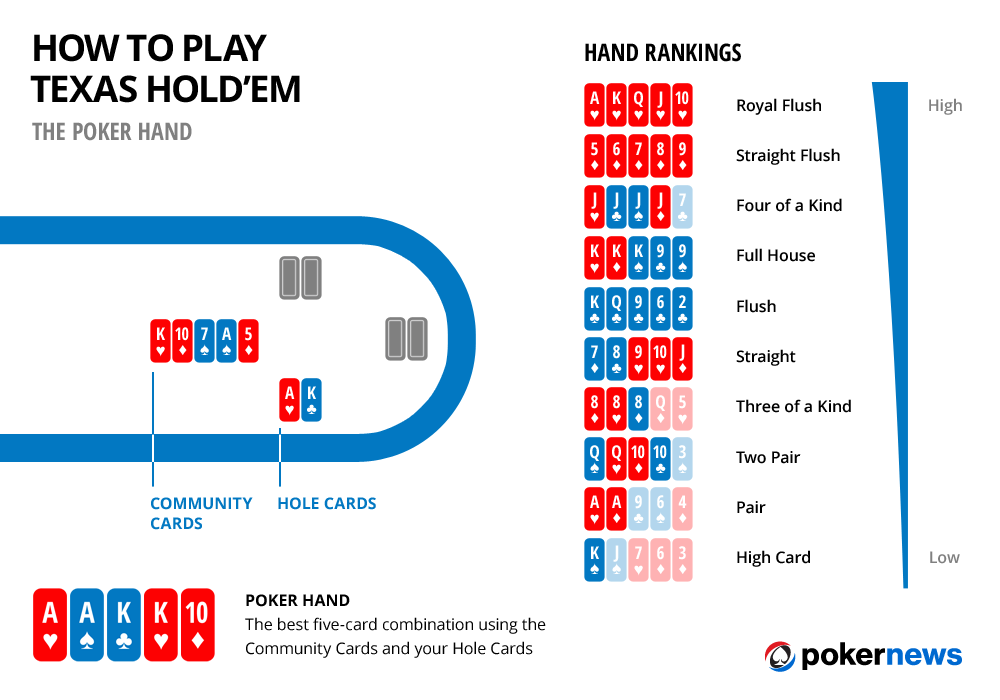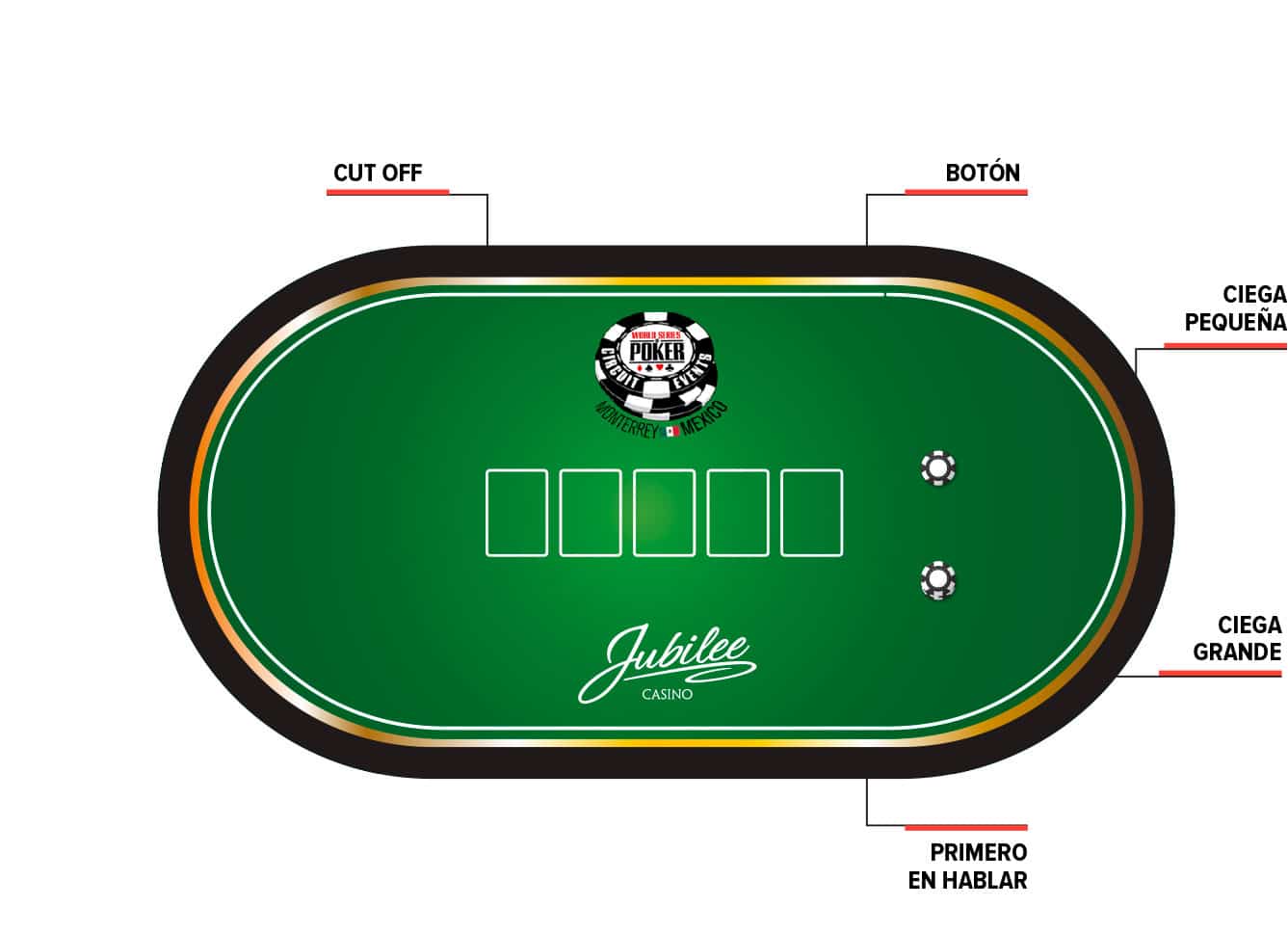.......................................
START
.......................................
AZTexasHoldem Tool - FREE
.......................................
TEXAS HOLD'EM - BEGINNERS GUIDE
- How To Play Texas Holdem Blinds For Sale
- How To Play Texas Holdem Blinds Online
The Texas Hold Em Poker Tournament Blinds will determine the length of time a particular poker tournament takes to complete. In addition, the poker tournament blind structure provides an important strategic consideration for the style of play best suited to the particular poker tournament. If the big blind is an aggressive player with a high 3-bet frequency, tighten your range. When a super-tight player is in the big blind, open-raise with an even wider range. You should lean towards using a larger open-raise size (around 3x) in blind vs blind situations.
01. How to play Texas Hold'em
02. Texas Hold'em Card Ranks
03. Basics Of Poker
04. Texas Hold'em Bankroll Management
05.Know Your Limit In Texas Hold'em
06. Starting Hands
07. Basic Texas Hold'em Strategy
08. Texas Hold'em Blind Play
09. Suited Cards
10. Importance Of Starting Position
11. Bluffing In Texas Holdem
12. Odds Outs Pot Odds
13. Dealing With Tilt
14. Pocket Pairs
15. Texas Hold'em Small Talk Glossary
16. Poker Terms
17. Poker Etiquette
.......................................
TEXAS HOLD'EM - ADVANCED GUIDE
.......................................
SPORTTRADER - SPECIAL OFFER !!!
.......................................
.•HOT FREEROLLS SCHEDULE
.•GUARANTEED TOURNAMENTS
.•POKER ROOMS SPECIAL OFFERS
.•TIPS AND ARTICLES FROM PROS
.•POKER QUIZ
.• AZ POKER BOOKSHOP
.• POKER SYSTEMS
.• POKER SOFTWARE
External Links:
.•POKER ACADEMY
.•POKER SOCIAL NETWORK
.•POKER CLUB - 40% VALUE BACK
.•MOBILE POKER
.•CONTACT US
........................................
The big blind is unique and different from any other position at the table. There are certain things we would do in the big-blind that we would almost never do in any other position.
Even good players will nearly always lose money in the big-blind. Being forced to invest 1bb before even seeing our hole cards is a huge disadvantage, especially when you consider that we will spend much of our BB time
playing out of position.The name of the game in the BB is hence not to make money, but to lose the least amount possible.
If we imagine for a minute that we folded every single BB, we’d be losing at a rate of -100bb/100-hands. If we can make our overall BB winrate around -30bb/100-hands,
then we are essentially doing a very good job of offsetting our losses!Loosen Up!
Seeing as we have already invested some money into the pot (albeit involuntarily), we should typically do our best to defend this money. Remember thatwe get a better price on any cold-call since 1bb has already been invested.
The most common mistake that many players have been making for years is defending their big-blind too tightly. Even good players were not aware of this for a long time – the common advice was “always play tight from the blinds, we will be out-of-position postflop”.
Let’s have a look at some typical ranges and see how we can be a little tougher when defending our big-blind.
BB Ranges
BB vs BTN 2.5x
As we can see the recommended defending range from the big-blind against a BTN open is quite wide.
There are 3 colours here
- Light Red – Value 3bet
- Dark Red – Bluff 3bet
- Dark Blue – Cold-Call
It is important to remember that the size that the open-raisers use will change our defending frequency quite considerably. So if someone opens for a min-raise we should defend many more hands, while if someone opens for 3bb we should defend considerably less hands.
BB vs CO 3x
It makes sense to consider defending ranges vs a CO 3bb open rather than a 2.5bb seeing as it’s potentially going to be more common. Assuming our opponent open-raises to 2.5bb we should widen this defending range.
BB vs MP 3x
Same kind of stuff here, just tighter. Notice that the bluffing range consists entirely of speculative hands (more on this later).
The general idea here is that playability is a little more important when out-of-position, whereas our pot-equity is not necessarily that much of a factor. We won’t get to realise our equity as much when OOP by seeing a showdown, so it’s better that we have a non-dominated high-playability hand in our 3betting range such as a suited-connector.
We will see that assuming we are in position then equity is more important while playability becomes a little less important. This will be reflected in the BB vs SB ranges.
BB vs UTG 3x
BB vs SB 2.5x
BB vs SB is a very important situation in BB defense. Why so? It’s essentially going to be the most profitable BB situation we face. In today’s games SB can potentially open very wide and we are guaranteed to always have position postflop if we decide to defend.
So there is no reason why we shouldn’t be defending very aggressively with a wide range. Against a 2.5x open we should be defending roughly 50% of the time. 15% of the time by 3betting and 35% of the time by cold-calling.
A common mistake is not realising how wide we can go with our 3bet bluffs. It’s not necessarily intuitive that something like K5o is a good bluffing hand BB vs SB because at first glance it seems overly weak.
Assuming we face a min-raise in this situation we should be defending over 70% of hands. In fact there is a pretty reasonable argument for defending any two cards in the BB vs a SB min-raise.
Notice also that the types of hands that we 3bet have changed. Instead of 3betting speculative hands like suited-connectors, our raw pot-equity is a little bit more valuable than our playability. The idea is we get to realise this equity more fully when we have position and can control the action a little better.
So the hands that are selected as part of our 3bet bluff range are all high-equity hands such as Ax, Kx, and Qx holdings.
The Unique BB Spot
We mentioned earlier that there was a unique feature that the big-blind possesses. Imagine for a minute that we are in the CO facing a UTG open. We know that our opponent folds 75% of the time to 3bets. This is actually enough folds for us to generate automatic profit with a 3bet. So can we 3bet any 2 cards?
Actually no, we can’t. We can potentially expand our 3betting range but we need to be aware of the fact that there are still 3 players to act behind us. So 3betting something like 32o for automatic profit would be a mistake. We’d start to lose a ton of money when one of the remaining opponents wakes up with something or decides to make a play!
In the BB however, we can literally 3bet anything because we are closing the action. So if BTN who has 80% fold-to-3bet decides to open-raise and SB folds, it’s correct for us to 3bet 32o regardless of how terrible the hand is.
Overcalling/Squeezing
There is another situation we can face when in the BB. A player open-raises and he gets a cold-caller. In the BB we now have the option to overcall or squeeze.
A rough idea of what our ranges should look like in this spot can be found below. But first, the meaning of the colours:
- Light Red – Value Squeeze
- Green – Squeeze OR Overcall
- Dark Blue – Overcall
- Red – Bluff Squeeze assuming both players aren’t calling stations

Firstly notice how wide the overcalling range can become. Almost any 2 suited cards can be fine for an overcall.
On the other hand, notice how there are no offsuit hands in our overcalling range whatsoever.
This is because they do not play well multi-way. In a multi-way situation we’d prefer to make a straight or a flush as opposed to a weak 1 pair holding which offsuit hands typically make.
Also notice how we have hands in green that we should play a “mix” strategy with. In other words we can sometimes call and sometimes squeeze.

This is just a rough guide however. The exact squeezing range we should use depends on the position of the opener, the position of the caller, and the sizings used. We should also take into consideration whether we are out-of-position against just one opponent or both of them.
Iso-Raising or Checking
The final situation we can face is when we have the opportunity to either raise or to check-back when facing either limpers or a SB complete.
Remember that we shouldn’t feel any huge pressure to raise in this spot with marginal hands since we are already guaranteed to see a free flop by just checking back. In other words we should mainly just raise decent hands and check back the rest.
What qualifies as a “decent” hand will depend largely on whether we have position (in the case of facing a SB complete), or find ourselves out-of-position (facing a limp from any other position).
Assuming we are out-of-position we should typically raise a tight range of hands for pure value, such as the following...
Assuming that we are in position facing a SB complete, the number of hands we can profitably raise increases dramatically.
How To Play Texas Holdem Blinds For Sale
Putting it Together
If there is one thing we should take away from this article it’s that
we shouldn’t be scared to defend our BB aggressively. The offshoot of this is that we are going to be finding ourselves postflop with weaker hands than we are used to. In order to deal with this we should also invest time in learning how to play postflop when OOP.
More Top Recommended Content By Adam Jones
If you enjoyed reading this article, check out other top recommended articles by Adam Jones
- UTG Poker Strategy and Guidelines for EP Play
- Bluff-Catching The River
Or why not take a look at some of Adams PokerVIP coaching videos?
- The Advanced 3-Betting Strategy - Part 1
- Defending Blinds Post-Flop - Part 1
How To Play Texas Holdem Blinds Online

